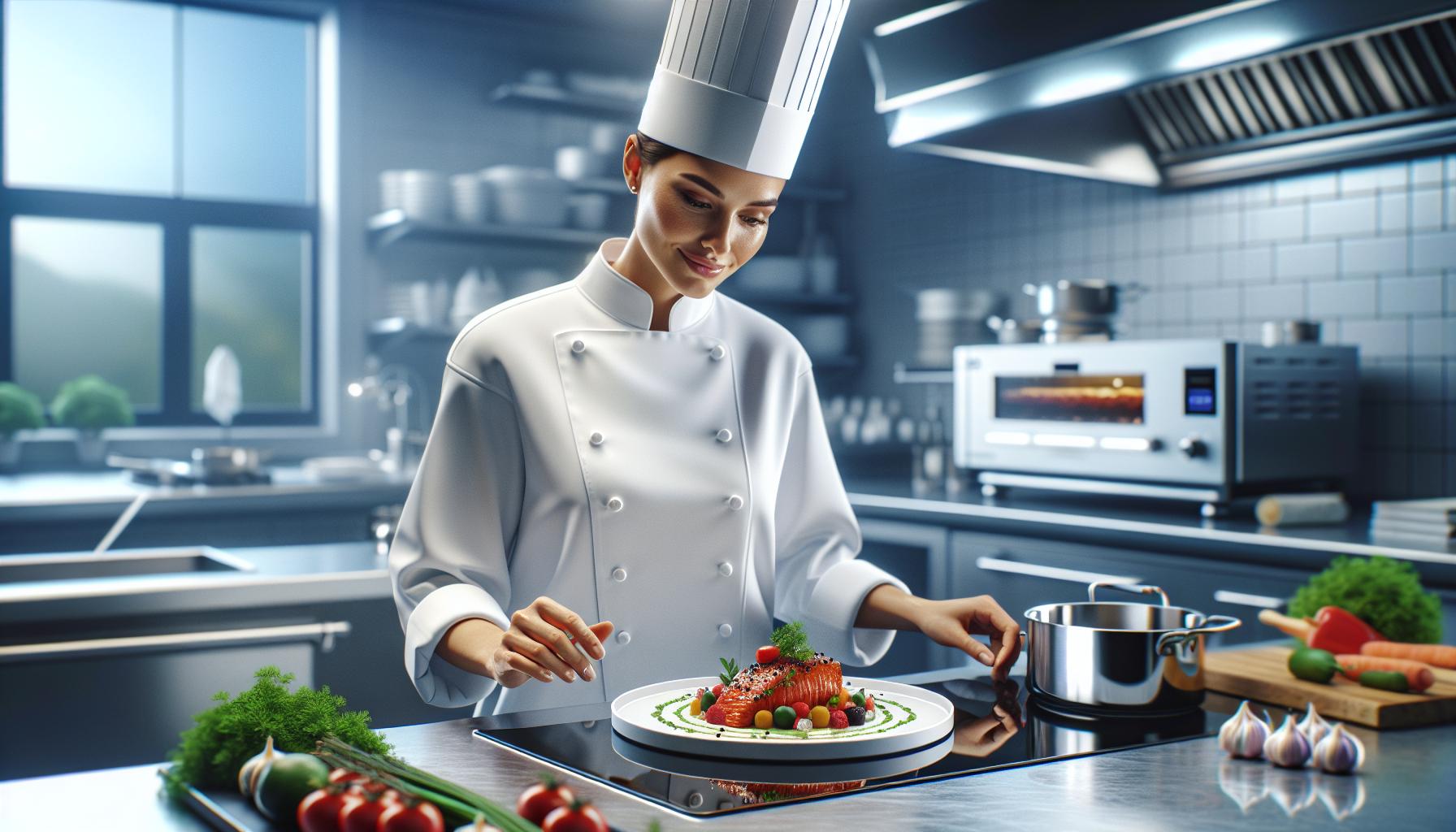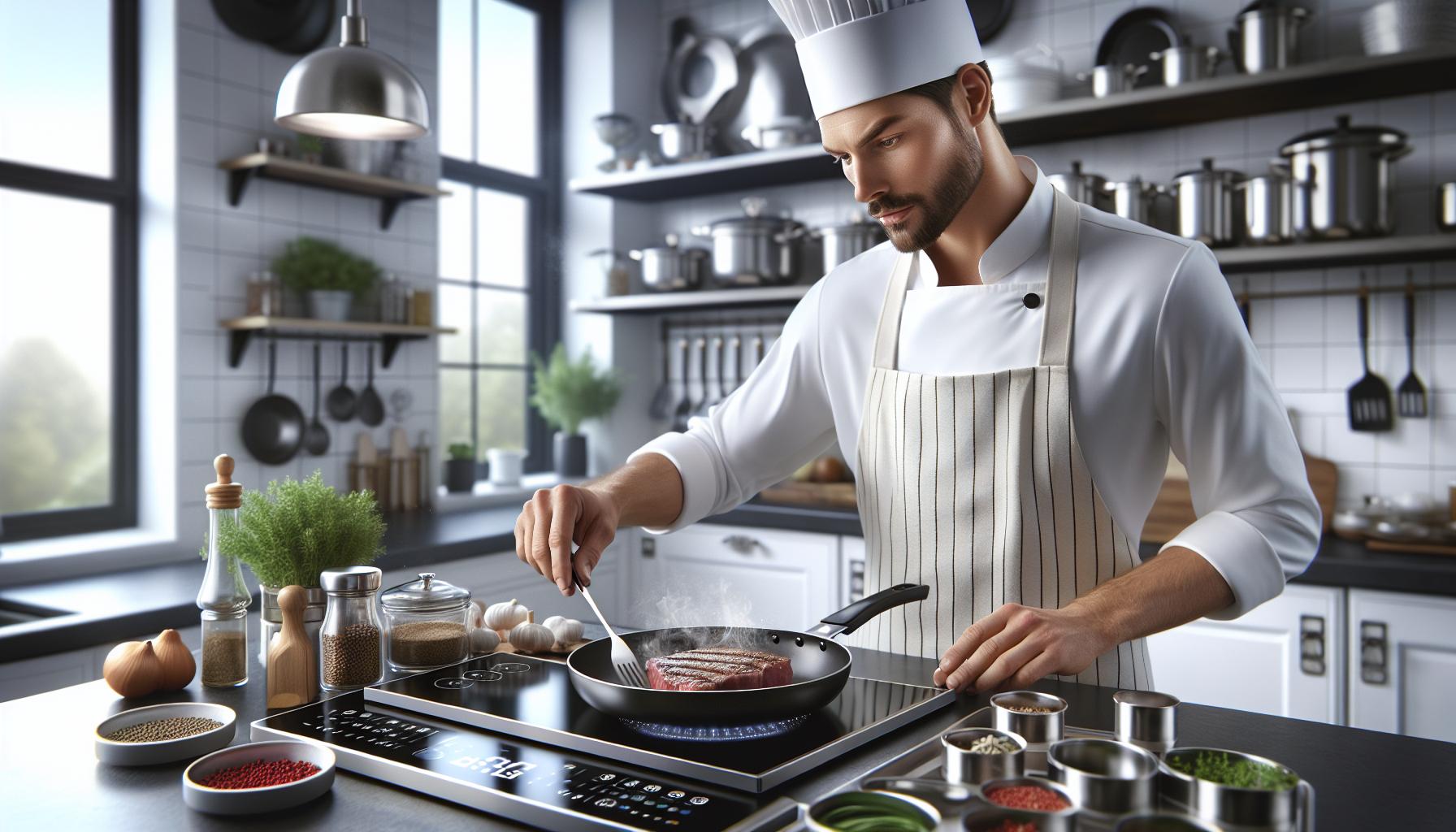Phone:
(701)814-6992
Physical address:
6296 Donnelly Plaza
Ratkeville, Bahamas.

Mastering advanced cooking techniques transforms ordinary home cooks into culinary artists. These sophisticated methods elevate simple ingredients into restaurant-worthy dishes that’ll make dinner guests wonder if there’s a professional chef hiding in the kitchen.
From mastering the art of sous vide to perfecting the elusive French mother sauces cooking becomes a thrilling adventure rather than a daily chore. While basic cooking gets food on the table advanced techniques unlock flavors textures and presentations that take meals from “meh” to “magnificent.” It’s like giving your taste buds a first-class upgrade without the hefty restaurant bill.
Advanced cooking methods incorporate scientific principles with precise techniques to achieve consistent, superior results. These methods transform ordinary ingredients into extraordinary dishes through controlled temperature application and specialized equipment.
Heat transfer in cooking occurs through three primary mechanisms: conduction, convection and radiation. Conduction transfers heat through direct contact between surfaces, like a pan’s metal surface heating food. Convection circulates heat through liquids or air, creating even temperature distribution in ovens and sous vide cooking. Radiation transmits heat through electromagnetic waves, as seen in broiling or microwave cooking.
| Heat Transfer Method | Application | Temperature Range (°F) |
|---|---|---|
| Conduction | Pan-searing | 300-500 |
| Convection | Baking | 200-450 |
| Radiation | Broiling | 500-550 |
Professional-grade equipment enables precise control over cooking variables. A digital thermometer measures internal temperatures within 0.1°F accuracy. High-quality stainless steel pans distribute heat evenly across cooking surfaces. Immersion circulators maintain exact water temperatures for sous vide cooking.
| Equipment Type | Primary Function | Price Range ($) |
|---|---|---|
| Digital Thermometer | Temperature monitoring | 30-100 |
| Stainless Steel Pans | Even heat distribution | 80-200 |
| Immersion Circulator | Temperature control | 100-300 |

Temperature control distinguishes professional cooking from basic food preparation. Precise heat management affects food’s texture, moisture content, and flavor development at the molecular level.
Low-temperature cooking methods transform tough cuts of meat into tender delicacies through extended cooking times at temperatures between 165°F and 225°F (74°C to 107°C). Braising creates fork-tender results in dishes like osso buco by breaking down collagen into gelatin at 180°F (82°C). Smoking meats at 200°F (93°C) develops complex flavor compounds while maintaining moisture content above 65%. Sous vide cooking holds proteins at exact temperatures: 131°F (55°C) for medium-rare steak yields consistent edge-to-edge doneness.
High-temperature cooking creates distinctive flavors through Maillard reactions at temperatures above 300°F (149°C). Searing steaks at 400°F (204°C) develops a caramelized crust while maintaining internal temperatures. Stir-frying vegetables at 450°F (232°C) preserves crispness through rapid moisture evaporation. Broiling fish at 500°F (260°C) produces a golden exterior in 6 to 8 minutes. Pizza stones heated to 550°F (288°C) create authentic Neapolitan-style crusts with characteristic leopard-spotting in 90 seconds.
| Cooking Method | Temperature Range | Optimal Duration |
|---|---|---|
| Braising | 180°F (82°C) | 3-4 hours |
| Smoking | 200°F (93°C) | 8-12 hours |
| Searing | 400°F (204°C) | 3-5 minutes |
| Stir-frying | 450°F (232°C) | 2-4 minutes |
Advanced kitchen technology transforms traditional cooking methods into precise, scientific processes. These innovations enable chefs to achieve consistent results through temperature-controlled environments.
Sous vide cooking uses vacuum-sealed bags and temperature-controlled water baths to prepare food at exact temperatures. Professional kitchens utilize immersion circulators to maintain water temperatures within 0.1°F accuracy for perfect doneness. This method delivers consistent results for proteins like steaks cooked to 131°F for medium-rare or fish at 125°F for tender, moist results. The technique preserves nutrients while intensifying flavors through extended cooking times of 1-4 hours for most dishes. Vacuum sealing locks in marinades enhances flavor infusion during cooking.
Molecular gastronomy applies scientific principles to create innovative culinary experiences. Chefs use techniques like spherification to transform liquids into caviar-like spheres through calcium reactions. Liquid nitrogen at -320°F flash-freezes ingredients to create unique textures in mousses desserts. Modern kitchens incorporate tools like centrifuges to separate ingredients into distinct components. The process creates concentrated flavors through techniques like reverse osmosis filtration. Hydrocolloids such as agar agar gelatin alternatives enable chefs to manipulate food textures at precise temperatures between 85°F to 195°F.
Professional flavor development transforms basic ingredients into complex culinary masterpieces through strategic layering techniques and diverse global ingredients.
Layering flavors creates depth through strategic ingredient combinations at different cooking stages. Professional chefs build complexity by adding aromatics like shallots garlic or ginger as foundational flavors. Fresh herbs introduce bright notes during cooking while dried spices release their essential oils when toasted. Umami-rich ingredients such as mushrooms soy sauce or aged cheeses add savory undertones. Acid components like citrus vinegar or wine balance richness while enhancing other flavors. Temperature variations affect taste perception creating dynamic flavor profiles when hot spicy elements combine with cool fresh ingredients.
International ingredients expand culinary possibilities beyond traditional Western cooking. Japanese kombu adds depth to broths while Korean gochugaru delivers complex heat with fruity undertones. Middle Eastern za’atar combines woody herbs with sesame adding nutty aromatic elements. Latin American aji amarillo peppers contribute fruit-forward heat distinct from Asian chili varieties. African berbere spice blend incorporates paprika fenugreek coriander creating warm complex profiles. Indian black salt (kala namak) provides sulfurous umami notes transforming plant-based dishes. Essential pantry additions include fish sauce miso paste preserved lemons Chinese black vinegar fermented black beans.
Professional plating transforms dishes into visually striking presentations through strategic arrangement and artistic composition. Modern plating combines classical French techniques with contemporary design principles to create memorable dining experiences.
Professional chefs build vertical compositions using precision stacking techniques for dynamic plate presentations. A sturdy base component, such as purées or grain mixtures, anchors taller elements securely. Micro-greens crown the apex of plated dishes, adding delicate height without overwhelming the composition. Strategic placement of ingredients at varying levels creates depth perception through carefully controlled negative space. Sauces applied in precise dots or swooshes guide the eye across multiple planes of the plate. Cross-stacking protein slices at 45-degree angles generates architectural interest while maintaining portion control.
Color harmonies enhance visual appeal through strategic placement of complementary ingredients. Deep purple beets contrast with bright citrus segments while creamy white purées provide neutral anchoring elements. Textural variety engages diners through combinations like crispy garnishes atop smooth components. Professional chefs incorporate:
Strategic placement ensures every bite contains multiple texture profiles. Garnishes add pops of color through edible flowers microgreens citrus supremes.
Advanced cooking techniques represent the bridge between home cooking and professional culinary artistry. By mastering temperature control precision plating and sophisticated flavor development home cooks can create restaurant-quality dishes that delight both the palate and eyes.
The combination of traditional methods and modern innovations opens up endless possibilities in the kitchen. Whether it’s sous vide cooking molecular gastronomy or the artful application of global ingredients these techniques empower cooks to push their culinary boundaries and create extraordinary dining experiences at home.
The journey to culinary excellence isn’t just about following recipes – it’s about understanding and applying these advanced techniques with confidence and creativity. With the right knowledge tools and practice anyone can transform their cooking from good to exceptional.